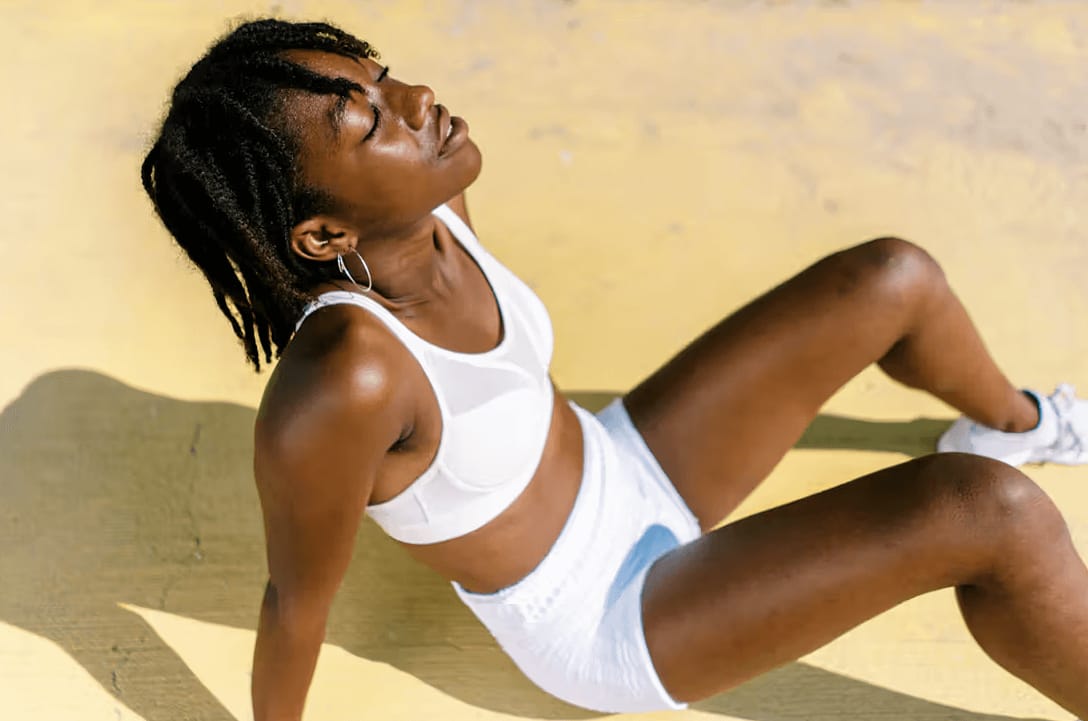- Thriving Guide
- Posts
- Why You Might Feel Nauseous After a Workout
Why You Might Feel Nauseous After a Workout
What’s behind post-workout nausea and how to prevent it for smoother exercise sessions.

Feeling queasy after a workout can be frustrating, especially when you’ve just completed a great session. But post-exercise nausea is more common than you might think. Factors like dehydration, meal timing, exercise intensity, and even heat exposure can all play a role. By identifying the cause, you can take simple steps to prevent it from happening again.
1. Dehydration
Sweating causes you to lose both fluids and electrolytes. Without replacing them, you may experience nausea, dizziness, and muscle cramps. Hot or humid weather amplifies the risk.
Tip: Sip water consistently throughout the day, not just during workouts. If you’re sweating heavily, consider adding an electrolyte drink.
2. Exercising on a Full Stomach
A large pre-workout meal can interfere with digestion because blood is redirected to working muscles. This can leave undigested food jostling in your stomach, leading to discomfort.
Tip: Finish large meals 2–3 hours before working out, and choose lighter snacks if you need a quick boost.
3. High-Impact Activity
Bouncing motions like running or jumping can upset your stomach, especially when it’s full. Some people also experience motion sickness-like symptoms from the repetitive up-and-down movement.
Tip: Opt for low-impact workouts such as swimming, cycling, rowing, or elliptical training if high-impact cardio makes you nauseous.
4. Low Blood Sugar
Exercising on an empty stomach can cause hypoglycemia (low blood sugar), which may lead to nausea, fatigue, or lightheadedness.
Tip: Eat a light, carbohydrate-rich snack (like a banana or toast with nut butter) 30–60 minutes before your workout if fasted workouts don’t suit you.
5. Overexertion
Pushing yourself too hard especially with high-intensity or endurance workouts can disrupt digestion and trigger nausea. This is sometimes linked to exercise-induced gastrointestinal syndrome (EIGS), which can also cause stomach pain or cramps.
Tip: Build intensity gradually and listen to your body’s limits.
6. Heat Exposure
Your body works to cool itself during exercise, diverting blood from your stomach to your skin. Combined with hot or humid conditions, this can lead to overheating and nausea.
Tip: Exercise during cooler hours, wear breathable clothing, and stay well-hydrated to avoid heat-related issues.
7. Sports Drinks or Energy Snacks
While sports drinks and gels can replenish electrolytes, some formulas are high in sugar or certain ingredients that upset the stomach. On the other hand, drinking only water during long workouts can cause hyponatremia (low sodium levels), which also causes nausea.
Tip: Choose electrolyte drinks with moderate sugar content or alternate between water and sports drinks during long sessions.
How to Get Immediate Relief
If nausea hits during or after a workout:
Stop and rest in a cool, shaded, or air-conditioned space.
Sip water or an electrolyte drink slowly.
Take deep, steady breaths or lie down with your legs slightly elevated.
Avoid heavy food until your stomach settles.
How Long Does It Last?
Most workout-related nausea subsides within 30–60 minutes as your body returns to normal.
Preventing Future Nausea
Stay hydrated throughout the day.
Avoid heavy meals right before workouts.
Eat a light snack if fasted exercise makes you dizzy.
Warm up gradually and cool down properly.
Track your workout habits, including weather, meal timing, and intensity, to identify personal triggers.
When to See a Healthcare Provider
Occasional nausea isn’t usually serious, but consult a doctor if it’s persistent, prevents you from exercising, or is accompanied by symptoms like chest pain, vomiting, or fainting.
The Bottom Line
Nausea after exercise is often due to manageable factors like hydration, diet, or overexertion. By making a few small changes to your pre- and post-workout routine, you can enjoy exercise without discomfort.
If you found this article helpful, share it or subscribe to our newsletter for more fitness and health tips.